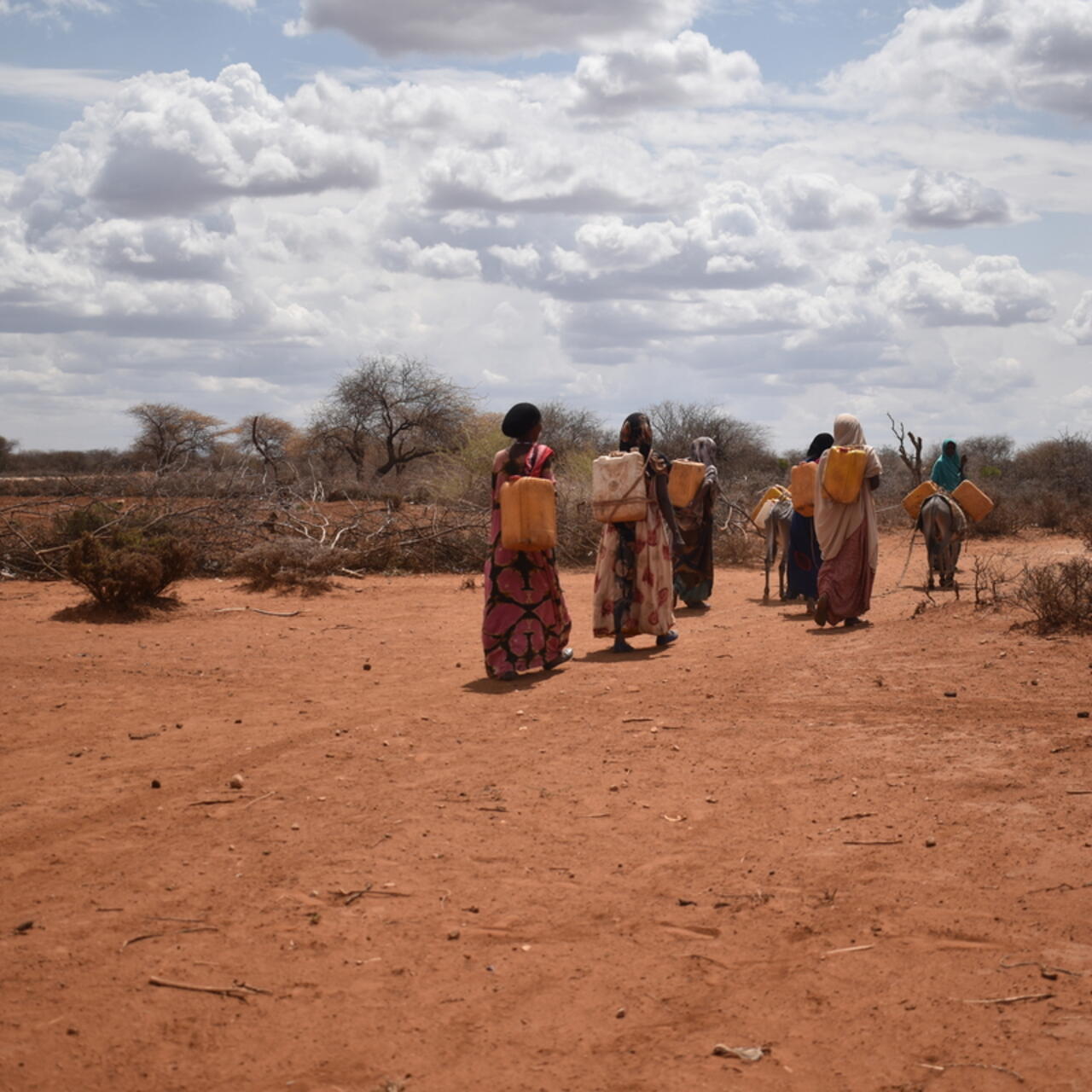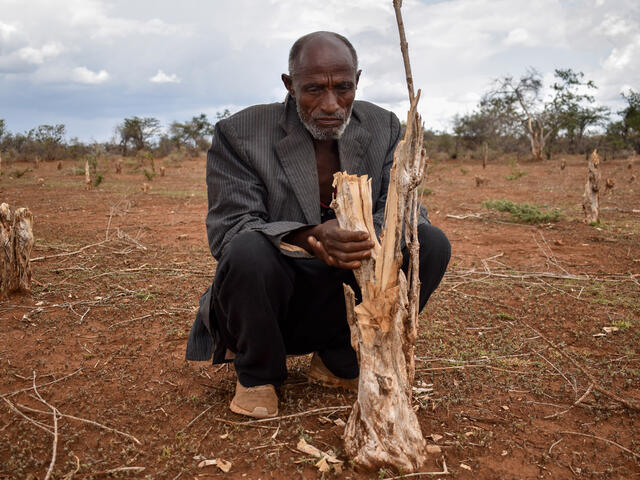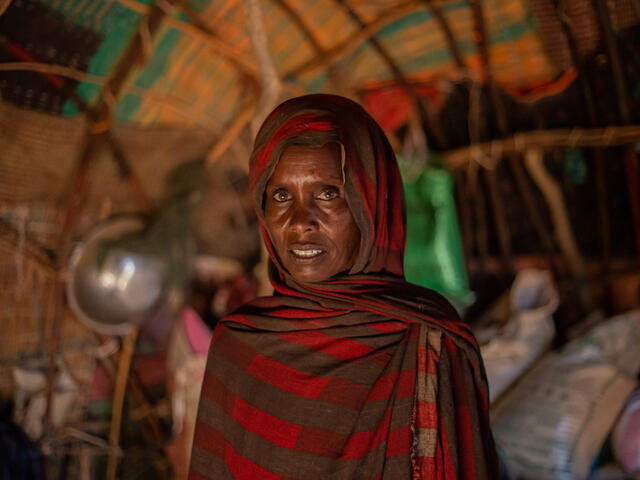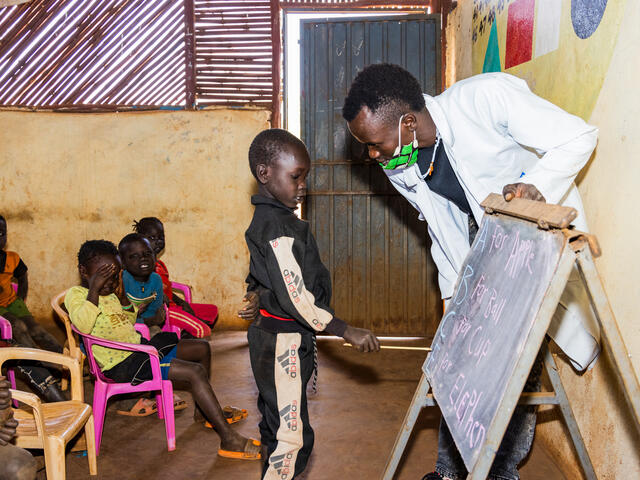
Crisis in Ethiopia: Drought and conflict put 28 million in need
Five reasons why Ethiopia is at risk of worsening humanitarian crisis in 2023

Five reasons why Ethiopia is at risk of worsening humanitarian crisis in 2023
For the second year in a row, Ethiopia ranks as number two on the IRC's Watchlist - making it one of the top countries most at risk of worsening humanitarian need in 2023.
Prolonged drought in the southeast of the country, continued economic stresses, and the impact of conflict in northern Ethiopia, Oromia and elsewhere, are all exacerbating needs for millions of people.
This threatens to prolong a drought already affecting over 30 million people. At the same time, it is grappling with the impact of various conflicts across the country, particularly in the Oromia, Afar, and Benishangul-Gumuz regions. This is hampering humanitarian organisations’ ability to reach crisis-affected communities with critical support.
Episodic fighting between the Ethiopian government and the Tigray People’s Liberation Front (TPLF) throughout 2022 heightened humanitarian needs and risks to civilians in northern Ethiopia. A November 2022 peace deal offers some hope: if it holds, it will bring an end to the conflict in Tigray.

The United Nations estimates that 20 million people in Ethiopia are currently experiencing food insecurity, meaning they are unable to access or afford the food needed to live a healthy life. This will continue into 2023 and catastrophic conditions - where people are starving to death each day - could spread if aid is not immediately scaled up and seasonal rains are poor.
In Oromia, limited access to safe drinking water due to the drought has also contributed to a cholera outbreak. This is particularly dangerous for children whose bodies have been weakened by insufficient food.
A peace deal to end hostilities in the northern Tigray region was announced in November 2022, providing some hope for the more than 5.2 million people in the region who remain in urgent need of humanitarian assistance. For now, it is unclear whether the peace deal will hold or humanitarian assistance will be able to ramp up quickly to meet the scale of the needs.
Conflicts in other regions, particularly Oromia, Afar, and Benishangul-Gumuz, are also driving up needs and disrupting aid. The armed group al-Shabaab, which has largely operated in neighbouring Somalia, clashed with security forces in Ethiopia’s Somali region in July 2022, which could add to the challenges facing Ethiopian authorities in 2023.

Numerous crises - drought, conflict and the economic impacts of the war in Ukraine, and global economic conditions - are straining Ethiopian government resources, limiting what it can deploy to address the growing food insecurity crisis.
On top of that, inflation reached a high of 37.7% in May 2022. While inflationary pressures have since eased to their lowest levels in 12 months, food prices remain high. The drought has also eroded people’s access to food, in part due to the high rate of livestock deaths, making it harder for families who rely on agriculture for income to afford enough food
Ethiopia’s drought response requires $1.66 billion. At the end of 2022, only 42% of this was funded, and UNICEF’s appeal for children remains only 38% funded. Only 12% of people in drought-affected areas have been reached with health services, and less than 30% with water, sanitation and hygiene assistance – all of which are critical in avoiding mass deaths during a drought and cholera outbreak.

Since 2000, the IRC has provided a wide range of assistance for refugees living in camps and for Ethiopian communities throughout the country who have been affected by drought, flooding, conflict and COVID-19. In strong partnership with local organisations, we distribute cash and basic emergency supplies, including for women and girls, and build and maintain safe water supply systems and sanitation facilities. The IRC also supports government partners and community workers in primary healthcare clinics, constructs classrooms and trains teachers, and provides livelihoods-related training and job opportunities to youth and at-risk households.
Donate now to support the IRC's life-changing work in Ethiopia and worldwide. We are on the frontlines providing critical aid to crisis-affected people in more than 50 countries, including places on the 2023 Emergency Watchlist.
Read more about the top 10 crises the world can’t ignore in 2023, find out how the IRC selected these countries, and download the full 2023 Emergency Watchlist report for profiles of all 20 crisis countries on the IRC's list.